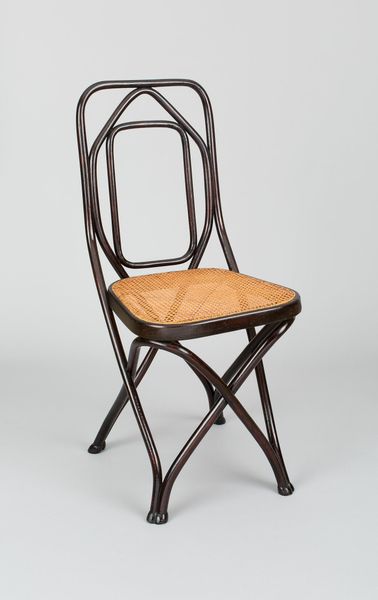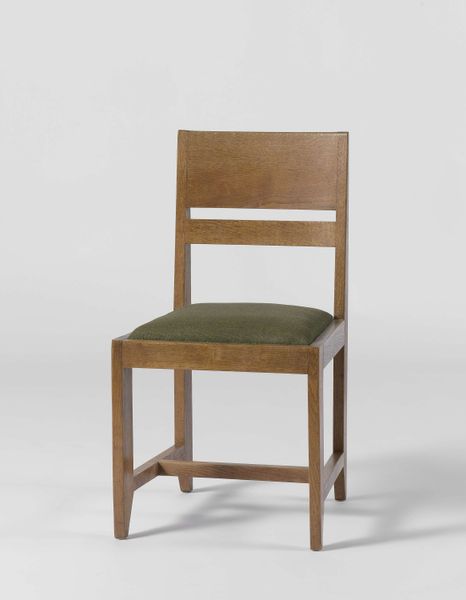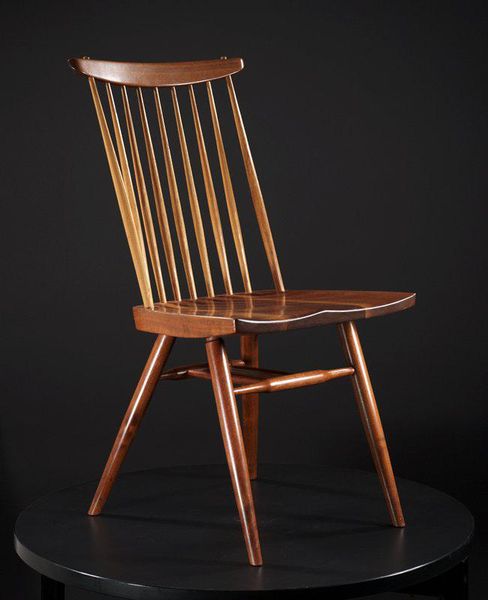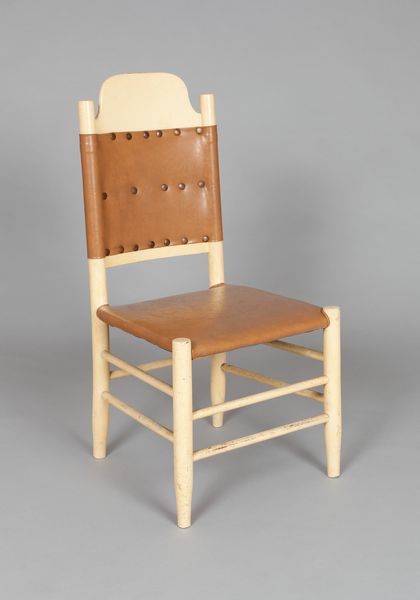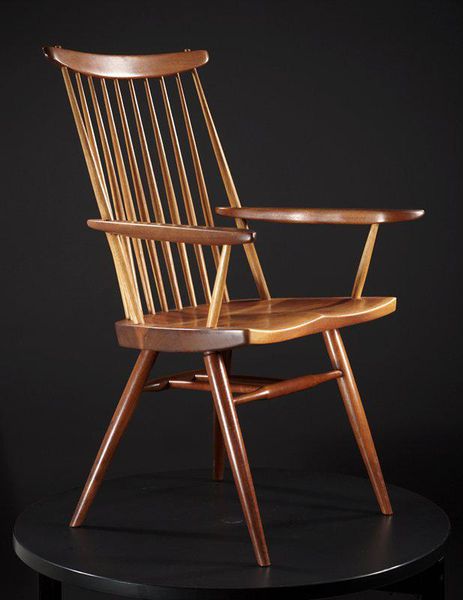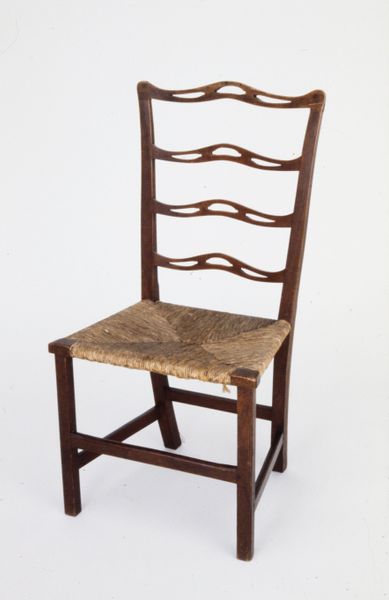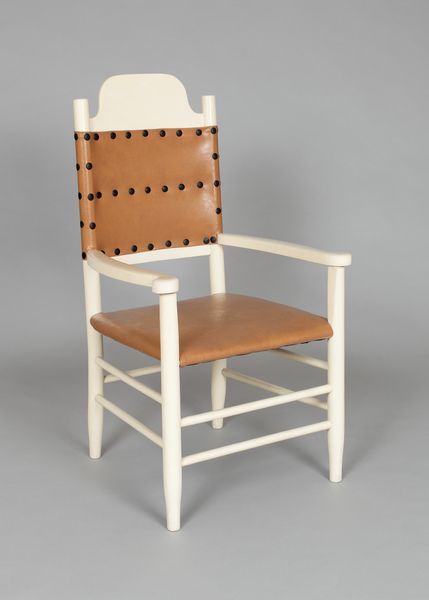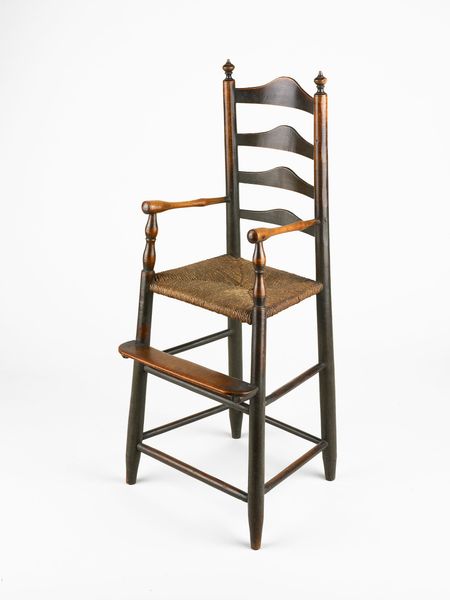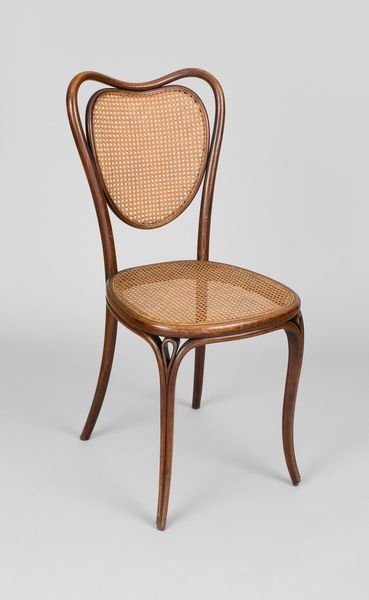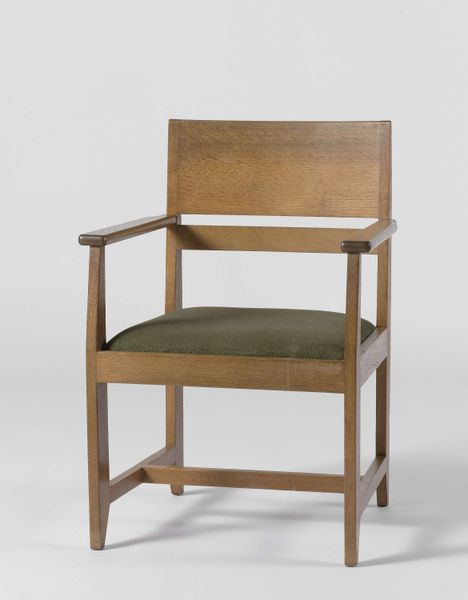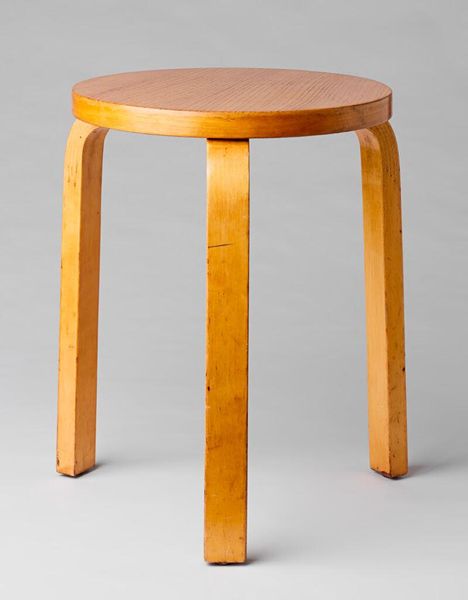
wood
#
organic
#
furniture
#
wood
Dimensions: 28 x 23 1/2 x 18 1/2 in. (71.12 x 59.69 x 46.99 cm)
Copyright: No Known Copyright
Editor: This is George Nakashima's "Grass-Seated Chair," made around 1961. I’m immediately drawn to the combination of refined woodworking with the raw texture of the seat. It feels very grounded, almost like it’s bringing the outdoors inside. What do you see in this piece? Curator: The chair resonates with a deep connection to nature and a yearning for simplicity. Nakashima's choice of natural materials isn’t merely aesthetic; it’s symbolic. Wood, across many cultures, signifies growth, stability, and the interconnectedness of life. Notice how he allows the wood's grain to speak for itself; it's almost a reverence for the inherent beauty of the material. How do you feel the grass seat plays into that? Editor: I guess the seat amplifies the feeling... it looks almost hand-woven and seems very connected to folk traditions. Does it have a place in any particular cultural context? Curator: Absolutely. Indigenous cultures throughout the Americas have a long tradition of utilizing readily available natural fibers for functional objects. By incorporating this grass seat, Nakashima not only adds texture but also subtly evokes that memory of self-sufficiency and harmony with nature. It almost seems to echo a desire for simpler times. Does the shape or design remind you of any archetypal images? Editor: Now that you mention it, the lines feel both modern and somehow really ancient… Like a simple stool that transcends time. I am thinking of primitive artifacts. Curator: Precisely. By combining the sleek lines of modern design with such fundamental, age-old forms and materials, Nakashima taps into something profound within the collective human consciousness. We sense that this chair has been here before, in other iterations and times. Editor: That's amazing! I hadn't considered the depth of cultural memory embedded in such a simple form. Curator: And it underscores the notion that objects are never just things, but rather vessels of meaning and history. Perhaps we could look at all design through the lens of iconography.
Comments
No comments
Be the first to comment and join the conversation on the ultimate creative platform.
